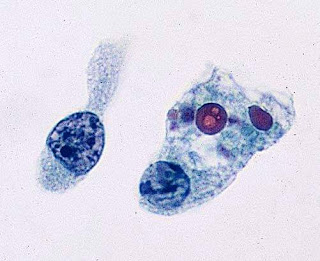ATP
What is ATP?
ATP or adenosine triphosphate is the energy carrying compound that captures the energy produced from breakdown of food and delivers that energy for various physiological processes.
Adenosine triphosphate(ATP) is an important extracellular signalling molecule also. ATP molecule that stores energy is required in all physiological activities.The energy is released from food in the form of ATP. ATP is converted into adenosine diphosphate(ADP) and adenosine monophosphate(AMP) and thereby release energy.It is comprised of three components -a nitrogen base, a ribose sugar and triphosphate. ATP is a stable molecule inbetween pH 6.8 and 7.4, in absence of any catalyst molecule. In glycolysis glucose and glycerol are converted to pyruvate. Glycolysis generates two molecules of ATP through substrate phosphorization. Most ATP synthesized in mitochondria will be used for cellular processes and it is very much important for energy needs.ATP is not a storage molecule in our body but glucose can be stored as glycogen and when energy is required, glycogen is broken into glucose and that undergoes glycolysis and krebs cycle to produce sufficient amount of ATP for normal functioning of our body.ATP is produced from ADP in the process of cellular respiration.It is produced by the enzyme ATP synthase which converts ADP and phosphate into ATP.More ATPs produced when energy requirement is high and production is less in resting condition.
Visit our website homepage for more articles on Pathology👇
www.pathologydiscussion.com
Feel free to share any of our articles on social media(Directly from the website) if you find it helpful. Thank you!!!!
ATP or adenosine triphosphate is the energy carrying compound that captures the energy produced from breakdown of food and delivers that energy for various physiological processes.
 |
| ATP molecule |
- Due to hypoxia, there is less ATP production in our body, so there is derangement of the essential physiological processes.Also due to less amount of food, there is also less ATP production.
Visit our website homepage for more articles on Pathology👇
www.pathologydiscussion.com
Feel free to share any of our articles on social media(Directly from the website) if you find it helpful. Thank you!!!!


Comments
Post a Comment
Thank you for posting your comment.Your question will be answered soon.